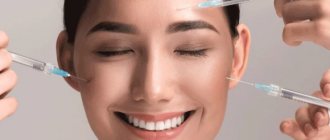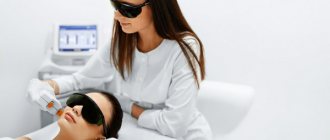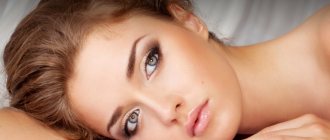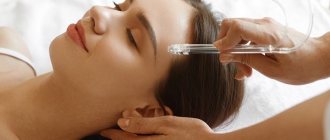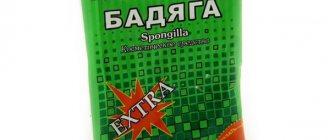Biorevitalization procedures are in high demand among patients of aesthetic clinics, and doctors often prescribe them for direct indications. We are talking not only about the ability to maintain skin hydration, but also about deep stimulation of cells for restoration and renewal.
However, this is an injection procedure, which often becomes an obstacle to its implementation. Many patients are afraid of pain from injections or have some contraindications to injections.
The solution to this situation, according to estet-portal.com, can be drugs with a peeling effect, which simultaneously have all the properties of biorevitalizants.
PURPOSE OF BOTH PROCEDURES
First, let us recall what these methods are individually.
Biorevitalization as a way to nourish the skin with moisture
“Biorevitalization” is a general term for all beauty methods aimed at correcting aesthetic imperfections using subcutaneous injection of hyaluronic acid (HA, or Hyaluronic acid). There is also local biorevitalization in specific areas of the face (mesotherapy).
To transport the moisturizing substance into the epidermis and dermis, either injections (fillers) or laser devices are used. The consistency of the useful ingredient can be liquid or ethereal (in the first case) or gel (in the second).
Hyaluronic acid is very physiological due to the natural presence of its molecules in the human body, does not cause complications and is well accepted by the body. The drug helps retain fluid in cells, accelerates metabolism and synthesis of collagen-elastin fibers, and saturates with beneficial microelements.
However, well-known cosmetologist in Russia Tiina Orasmäe-Meder claims: the amount of HA in the body of a healthy person remains unchanged until retirement age, if you drink enough water and maintain the barrier functions of the skin. Therefore, in her opinion, up to the age of 60, artificial transportation of acid into healthy (!) tissues does not make any sense.
Peeling as a way to stimulate cells
The main difference between peeling and biorevitalization is the principle of action.
We recommend: MECHANICAL PEELING: polishing beauty
Exfoliation exfoliates the upper layers of the epidermis and dermis, causing “controlled stress” to the skin. Dead cells are eliminated, and the remaining young ones begin to function with redoubled force.
Of course, by nature, humans are endowed with the ability to self-regenerate tissues: usually the full cycle of cellular renewal takes 28-30 days.
Is it possible to do it at the same time or is it better to do one after the other?
There are cases when experts recommend doing both procedures at the same time. Sometimes biorevitalization is prescribed after the introduction of fillers in order to obtain maximum results in cases where after one procedure the external effect is not noticeable enough.
In order to prescribe both procedures at the same time, the cosmetologist must determine the extent of the problem and only then decide whether it is possible to combine the procedures or do them on the same day, or whether this is not advisable.
First, the filler is introduced. After the drug begins to act, the procedure is repeated. A few days later, a biorevitalization session is scheduled.
If there is a need, the specialist can prescribe a biorevitalization procedure first, and only after it injections with fillers. The decision is made based on the client’s wishes and after assessing the condition of his dermis.
SEQUENCE AND COMBINATION OF TECHNIQUES
To determine what should come first: peeling or biorevitalization, let’s figure out what results this or that sequence of sessions gives.
Is it possible to do peeling after biorevitalization?
Exfoliating procedures after biorevitalization are not only possible, but in some cases necessary. This combination can be specifically prescribed by cosmetologists (see table):
| CONDITIONING FACTORS | SPECIAL PURPOSE |
| The body needs more help |
| The skin needs to be prepared |
| In order for the acid to act more evenly, the epithelium needs to be smoothed |
| Biorevitalization shortens the subsequent period of swelling |
| The methods will mutually enhance the effect |
Peeling after biorevitalization provides:
- Prolonged result;
- Reducing the number of both procedures (3 sessions of biorevitalization and 1 subsequent treatment with an exfoliant are sufficient);
- Saving money and time.
We recommend: 3 best MULTICACID PEELINGS
How many days after biorevitalization can peeling be done:
- If there are no complications, exfoliation can be started only after 2-3 weeks for epithelization to complete;
- The duration of the pause depends on the consistency of the administered drug (liquid solution or ether);
- At least 2 weeks should also pass between biorevitalization sessions.
Is it possible to do biorevitalization after peeling?
If you ask a cosmetologist whether it is possible and necessary to do peeling before biorevitalization, the answer (adjusted for individual indications) will most likely be positive. However, the specialist will explain that it is first important to wait for the healing of the integument injured by exfoliation:
Duration of the minimum pause after the session
| EXFOLIATION | EXAMPLES OF ACIDS | BIOREVITALIZATION |
| Superficial | Glycolic | In 3-4 days |
| Middle | Trichloroacetic | In 2-3 weeks |
| Deep | Salicylic | In 30+ days |
Peeling before biorevitalization provides:
- Prolonged result of injections (instead of 4-6 months - up to 1 year);
- More pronounced moisturizing effect (noticeable after 2 weeks);
- Additional smoothing of fine wrinkles;
- A clearer oval face;
- Leveling scars and age spots.
Biorevitalization after peeling is carried out according to the following algorithm:
- First, 2 weekly sessions of preparatory exfoliation are prescribed.
- After another 1 week, a biorevitalization session follows.
- Then, after the minimum period allotted for epithelization (see Table), several exfoliating procedures are carried out in a course.
- 2-3 weeks after the final exfoliation session, the final biorevitalization is carried out.
Peeling and biorevitalization at the same time
It is important to note that peeling and biorevitalization at the same time (in 1 session) are prohibited . This is explained by the fact that injections cannot be given on damaged skin with incompletely formed epithelium.
Ignoring the rehabilitation period after both procedures leads to serious complications. However, provided that the recovery period is observed, a combination of techniques over a short time horizon gives significantly better results than using them individually.
Volumetric contouring
Signs of premature skin aging include not only the appearance of wrinkles and sagging skin, but also the loss of youthful volume in the face. High-viscosity gels based on hyaluronic acid allow you to fill creases and folds and increase the volume of your cheekbones and chin. The most significant changes occur when filling the upper third of the face. Volumetric contouring is recommended for women 30-40 years old.
What is the danger?
The goal of contour plastic surgery on the part of the doctor is not only to restore youthful volume, but also to achieve a lifting effect. The volume created with the help of gel tightens excess skin and makes its sagging invisible. However, as is known, age-related tissue sagging occurs under the influence of gravity. The formula for gravity has been known to everyone since the 6th grade of high school. F=mg, where g is a constant and always equals 9.8. According to this formula, as mass increases, the effect of gravity increases. Fillers always have mass: they are less friable and porous, and their weight is heavier than the specific gravity of the dermis. Therefore, the introduction of filler in the presence (or tendency) of gravitational changes will further aggravate them. There is no other way.
Effect:
Initially, wrinkles and folds are smoothed out, the skin is tightened. Over time, sagging of the skin and soft tissue may increase.
How to:
Local fillers should be used taking into account the skin’s own framework and the presence of gravitational changes. A rehabilitation period must be maintained between contouring procedures. If the nasolabial fold breaks down some time after the procedure, filler cannot be added immediately.
FAQ | FREQUENTLY QUESTIONS FOR A COSMETOLOGIST
Quite often, questions about yellow (retinoic) exfoliation become a significant part of discussions on the topic “ How to combine biorevitalization and peeling .”
In conclusion, we will try to satisfy the curiosity of our website visitors regarding this highly effective “weekend treatment”.
- Biorevitalization after yellow peeling
This technique is based on the action of vitamin A: a popular keratolytic that deeply cleanses, stimulates the skin and further protects it from aging factors such as the sun and exhaust fumes.
Biorevitalization is prescribed no earlier than 3-5 days after treatment with retinoic acid. At this stage, the beneficial substances already have time to take effect. More accurate information can only be obtained through a face-to-face consultation with a specialist, depending on the specific indications.
Chemical peels
Peels appeared on the Russian market in 1997-1998 and remained the “kings” until the advent of new laser technologies. Now the fashion for them has decreased a little. Peels are recommended for both young and mature skin to combat defects, increased oiliness, smoothing, rejuvenation, launching regeneration processes, preserving the beauty and health of the skin.
What is the danger?
Since the procedure is bright and effective, leading to well-visualized changes, patients sometimes get too carried away with it. Meanwhile, peelings are a rather traumatic stimulation of the skin, after which it takes time to recover. Some chemical peels that enhance the activity of the basement membrane increase the proliferative activity of the epithelium. Sometimes this is a plus: the skin surface is renewed faster. And sometimes it’s a minus. When chemical peels are used very often or without indications, or the terms of preparation and rehabilitation are violated, a complication can occur, including increased proliferation: for example, severe hyperkeratosis.
Effect:
The health of the facial skin improves, pores narrow, wrinkles become less pronounced. If procedures are abused, excessive dryness of the skin develops, it becomes thinner, peels, loses elasticity, and dilated blood vessels may appear.
How to:
Chemical peels should not be performed regularly. Up to 35-40 years, one course of superficial chemical peels per year or one course of medium peels every two to three years is recommended. After 40 years before the onset of menopause - one or two courses of superficial chemical peels per year and one course of medium peels every one and a half to two years.
Are there any contraindications?
Any cosmetic procedure has certain contraindications that can have a negative impact on the patient’s health.
Biorevitalization and filler injections cannot be performed:
- with poor blood clotting, hemophilia;
if there is inflammation on the skin at the sites of planned injections;- for existing infectious and autoimmune diseases;
- during the period of taking anticoagulants;
- during pregnancy and lactation;
- if there are biopolymers or silicone in the area of intended correction;
- acute infectious diseases;
- oncology.
If you suspect pregnancy or if herpes occurs on the lips, it is better to postpone the procedure for a while, since eliminating the consequences will be more unpleasant than the presence of wrinkles on the face (more information about the consequences of using fillers and rehabilitation features can be found here).

